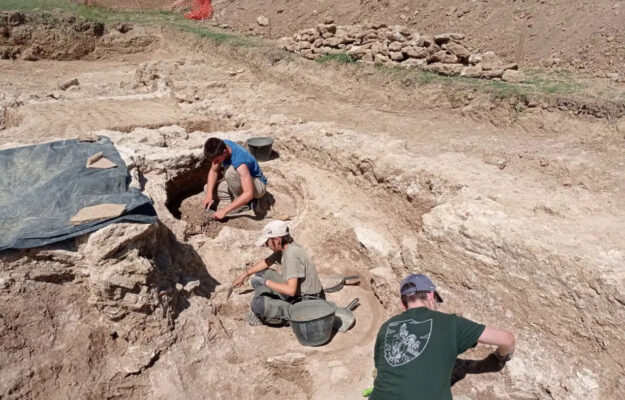Another testimony of the Romans’ love for wine, in addition to the profound competence with which they produced it: in San Gimignano, in the Vernaccia area - already suitable for centuries - a cellar from over 1,800 years ago was discovered during an archaeological excavation campaign. The location is the Roman villa of Aiano, dating back to between the 4th and 7th centuries AD: a large building, approximately 10,000 square meters, of which only half has been brought to light, thanks to studies carried out since 2005 by the Université Catholique de Louvain (Belgium) in collaboration with the municipal administration of San Gimignano, under the scientific direction of Marco Cavalieri, professor of Roman Archeology and Italian Antiquities at the Belgian university. The building was used for both the production and conservation of wine.
“Coordinating around twenty Belgian and Italian students and researchers, the campaign has effectively brought to light the villa’s wine cellar, the environment where wine was produced and stored, the primary source of existence of the villa in Valdelsa - explains Professor Marco Cavalieri - inside a large room of approximately 30 meters by 9, divided by six axial pillars that delimit two naves, currently one of the largest rooms in the villa, around thirty “dolia defossa” were found and partially investigated (large underground jars for storing wine). Based on their position and the size of the room, it is possible to assume that there were originally around fifty of them arranged in four rows, given that this suggests that they were produced not only for local consumption”.
Between 2023 and 2024, two rectangular basins (“lacus”) oriented north-south along the western wall of the room were also discovered. These basins, with internal walls covered with hydraulic plaster, have a cuvette (basin for collecting the scum) on the bottom and have ladders for descending to the bottom. “They were used for the fermentation of the must - explains Cavalieri - while the presence of the press was hypothesized based on the traces still visible. Chemical analyses carried out on samples taken inside the doli made it possible to confirm that the containers were lined inside with pine resin and pitch, substances used in the ancient production of wine”.
Copyright © 2000/2025
Contatti: info@winenews.it
Seguici anche su Twitter: @WineNewsIt
Seguici anche su Facebook: @winenewsit
Questo articolo è tratto dall'archivio di WineNews - Tutti i diritti riservati - Copyright © 2000/2025









































































































































































































